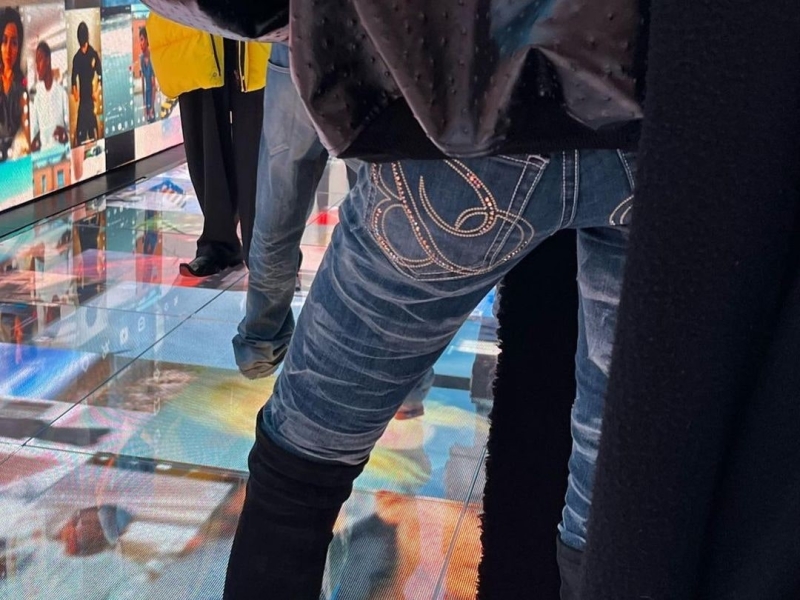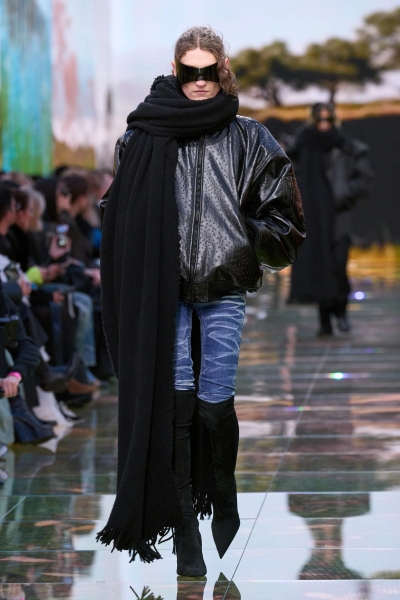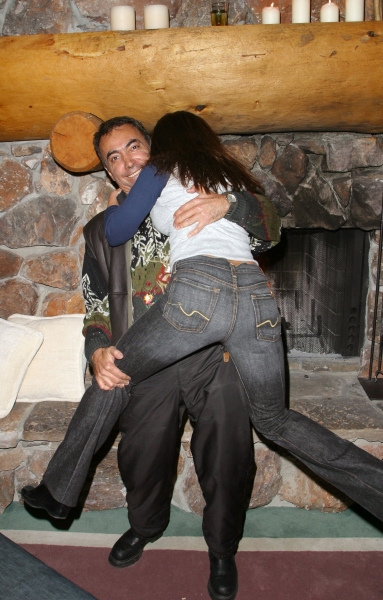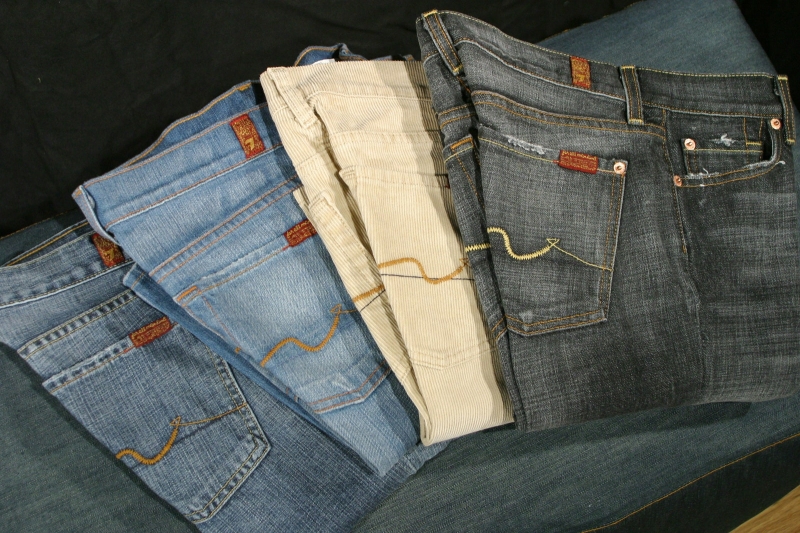
The bejeweled back pocket is back; a bull’s eye for the butt cheek! At the tail end of Paris Fashion Week, Balenciaga showed off a pair of skinny jeans with bleached creases cascading down the thigh that were conjoined with over-the-knee black stiletto boots. The cheekiest detail of the skinny denim pantshoes? The back pockets of the jeans were bedazzled with a sassy “B” logo. Rhinestones naughtily splayed beyond the pocket themselves (slouching towards crackdom) and curved in such a way that the logo caressed the derrière.

Balenciaga’s glittering gluteus visual harkened back to when denim was king in the early and mid-’00s. “I wanted nothing more than a pair of bedazzled True Religion jeans after hearing Fergie sing about it in ‘My Humps,’” says Senior Fashion and Style Writer Christian Allaire, referencing the 2005 Black Eyed Peas song in which Fergie raps, “They say they love my ass in 7 Jeans, True Religion/I say no but they keep givin.’” The beloved denim that went for $150 a pop—and up!—is mentioned only a line after luxury house Fendi and NYC institution Donna Karan. Denim reigned! Denim was luxury. Denim was being treated, quite literally, like a runway creation, as pairs were painstakingly tattered, splattered, dip-dyed, and artfully shorn.

While the denim of the noughties boasted intricate designs and lofty techniques, the most expressive moments came via the remixed rumps. A precursor to the commercial denim boom was seen in fall 2001 when Chloé, then under the direction of Stella McCartney, released dry clean-only darkwash flares with a back pocket featuring a sequined horse. A few years earlier for spring 1999, Tom Ford created a pair of jeans with feathers on the back pockets for Gucci. And as we inched more into the gifting suite-laden eras of the early and mid-’00s, who could forget the cowboy stitching of True Religion’s horseshoe logo—the bird’s eye view equivalent for a street-level tuchus? You couldn’t miss that the double-white thread! Or the heyday of 7 for All Mankind, which included a wispy horizontal line and a flared “7” logo that skimmed every tush from Hollywood to suburbia. Or the artful, quiet squiggles of Citizens of Humanity and Rock & Republic? Some denim pockets were unmistakable like the radical chaos of the Antik emblem and Baby Phat’s curvy cat logo, which recently made a comeback on the rear of Ice Spice’s skirt at this year’s Grammy Awards.

There’s no doubt that a logo communicates to the world what brands we align with–and denim brands of the ’00s put their logo on the prime real estate of pants: the butt. (Plus, using back pockets as a design default doesn’t interfere with actual denim technique.) While hardcore denim addicts may know which labels experiment with outré whiskers or extreme shredding, a strong back pocket logo makes it easier for the general public to identify a brand of jeans. “It is one of the ways in which they differentiate themselves from another brand,” says denim maven Jane Herman, Vogue Contributor who now runs the Substack, Jane on Jeans. In a world where denim can run the risk of looking similar or is unidentifiable at first glance, the back pocket logo is a stellar signifier to denote denim tribes and status.
Demna Gvasalia, whether at the helm of Balenciaga or Vetements, has always managed to subvert the ordinary, tweaking what is familiar with a perverse twinge, be it by perfecting an oversized hoodie or sculpting a tote bag with quadruple digit materials. Herman points out that in this pair of Balenciaga jeans, the House expanded the back pocket design beyond its posterior margins. “The fact that [the design] is beyond the pocket itself, I thought was interesting as commentary on the culture of back pocket design in a subtle way,” says Herman. “It literally is pushing the boundaries of the back pocket.”

Herman also points out that Balenciaga used rhinestones and not embroidery as the back pocket art, a quiet nod to breaking traditions of denim design. “What I always think about when it comes to something bejeweled, like for Balenciaga, is how interesting and inconvenient it is to sit on rhinestones,” says Herman. “The original intention of jeans is workwear. Obviously, there were no rhinestones anywhere; to put them on your butt, you’re scratching your furniture. You don’t sit in that jean, and if you do, you run the risk of a rhinestone or two falling off.” In this case, the glitzed-out back pocket design elevates the idea that jeans are no longer daily dungarees but instead boast a megawatt curb-to-cab appeal and must be treated accordingly.
Ultimately, the back pocket remix is always fun for denim—a bountiful wink from behind. As Herman says, “It’s something that you'll have to live with on your butt. If you’re going to put something there, it better be good.” In Balenciaga’s case, their expanding bedazzled logo on the behind rounds out the pair quite nicely.


